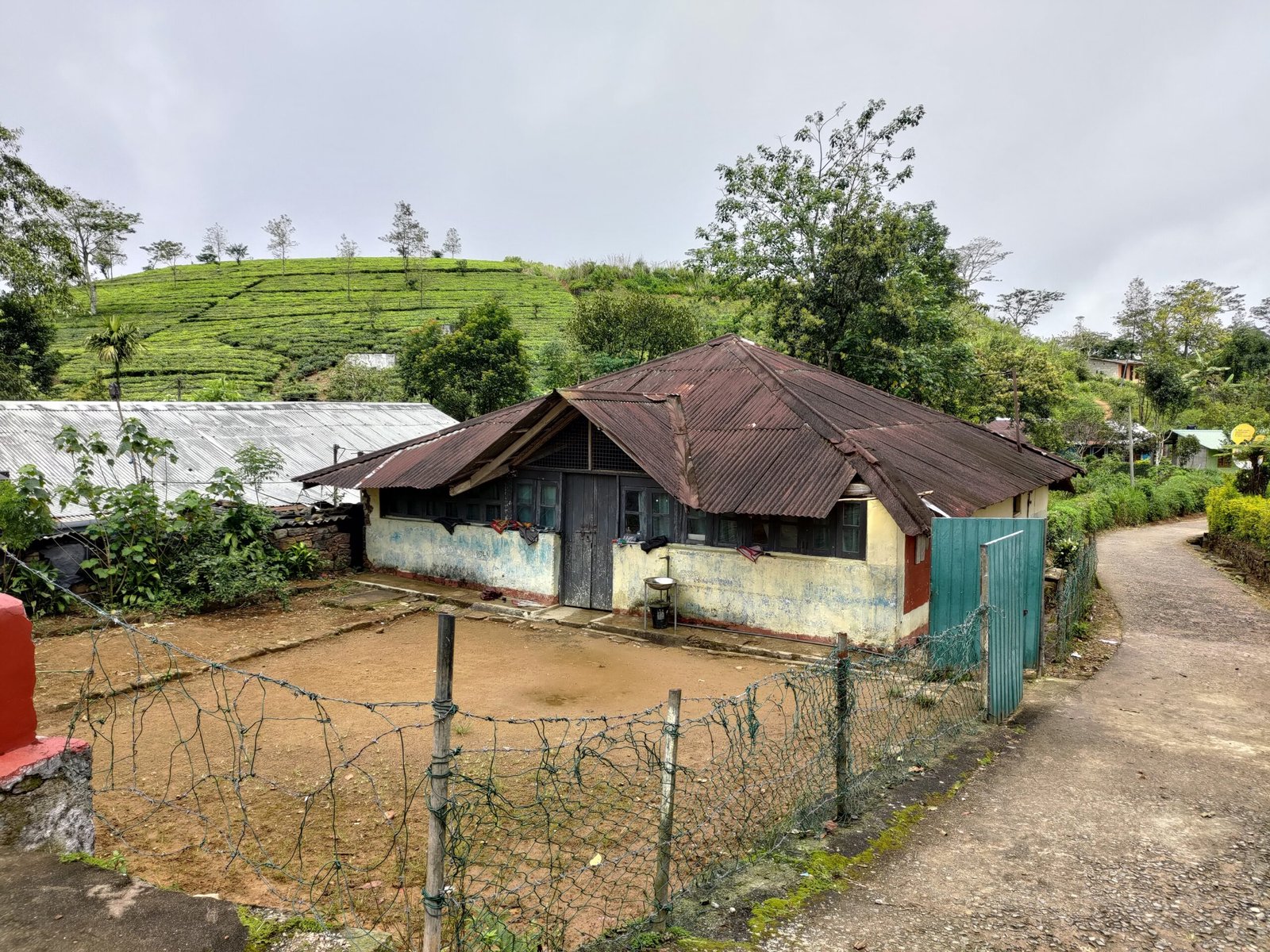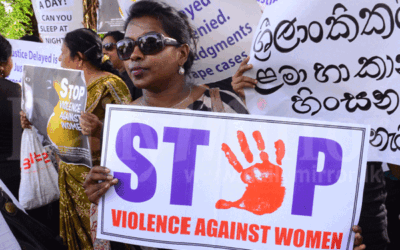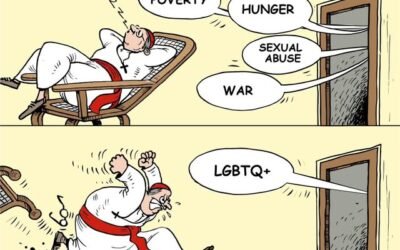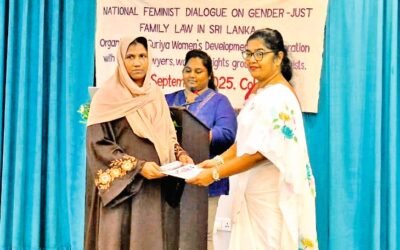Stirring the Hornet’s Nest: The NPP’s Education Reforms
Niyanthini Kadirgamar
Estate primary school in disused century-old tea plantation factory building
Education occupies a special place in the minds of the general public in Sri Lanka. Thanks to the visionary education reforms put forward by the Report of the Special Committee on Education in 1943 and the consequent Free Education Act of 1945, people from all walks of life have benefited from public education. Thus, no other singular reform agenda evokes such animated interest and vociferous debate as the subject of education.
Given such a context, to propose drastic changes to the public education system without extensive consultation and substantial consensus from interested parties is akin to stirring the hornet’s nest. No government should know this truth better than the present National People’s Power (NPP) government, with its parliamentary group consisting of a significant number of former student leaders, educationists, and academics. Yet, the surprise announcement of the ‘Transforming Education’ reforms by Prime Minister Dr. Harini Amarasuriya, who also holds the education ministerial portfolio, has caused quite the stir.
Putting the cart before the horse
Following the announcement of the education reform, a series of meetings were held in July and August by the Ministry of Education, Higher Education and Vocational Education in different parts of the country to raise awareness of the content and timeline for the implementation of the first phase which is to begin from January 2026 onwards. Preparatory tasks are to begin posthaste, including the production and distribution of modules and providing training for teachers on the new curriculum changes. It appears that the government has decided to steam ahead with implementation, before the reform proposals have been made public.
This undesirable approach of announcing the reforms without a White Paper being presented for deliberation has left us groping in the dark; speculating about what could be the full extent of the reform agenda, based on incomplete and contradictory interviews, statements, and remarks made by the prime minister and other government representatives at various events and in the media, and a speech made by President Anura Kumara Dissanayake in parliament. It is not yet clear if the government intends to develop such a report on the philosophy, scope, and intended outcomes of the reforms in the near future.
Concerns have also been raised over the deviation in the process of developing the education reforms. Although the National Education Commission (NEC) is mandated with reviewing and recommending policy reforms, it does not appear to have spearheaded the process. With no known committee or body being explicitly identified as the authors of the reforms, there is a blatant lack of transparency in this undertaking. The dizzying pace at which the substantive changes are being adopted, the lack of accountability and the ad-hoc and fragmented supply of information have caused much bewilderment, including among educationists. Such an approach would be deplorable under ‘normal’ circumstances; but to attempt it on a school system surviving on a shoestring after being battered by the impacts of the COVID19 pandemic and the ongoing economic crisis is a grave misjudgement by the new government.
Transforming secondary education
The dearth of solid information on the content of education reform has not hindered ongoing spirited debates which are, believe it or not, based on what was revealed in a bare-bones presentation of 33 slides. This powerpoint file, available only in English, was leaked via social media channels and thereafter uploaded on the Ministry of Education website is dated July 2025 and titled: “Transform Education: Transform Sri Lanka Education Reforms.”
Based on the slides, the proposed reform has five pillars, namely:
1. Curriculum Development,
2. Human Resources Development,
3. Development of Infrastructure Facilities and Education Administrative Reforms,
4. Assessment and Evaluation, and
5. Public Awareness and Promotion.
However, the presentation outlines the specific details intended to be implemented only under the first pillar – Curriculum Development. The presentation does not provide any analysis, evidence or rationale for the proposed changes to the curriculum.
Amongst the list of changes presented, two significant proposals standout:
1. Tracking students into career-oriented study paths on the completion of Grade 9, when the average age of the student is 14, and;
2. Merging vocational and technical education with general education.
Introducing a modular system from Grade 6 onwards, the reforms assume that the requirements of general education – orienting students towards a holistic development of their physical, mental, emotional and spiritual growth – can be achieved by Grade 9, with a national assessment on numeracy and literacy.
The stated purpose of study in Grades 10 and 11 are for the “foundation of career readiness”. Thus, limiting the number of subjects for the G.C.E Ordinary Level examination to seven, the five compulsory subjects for the exam are first language, English language, mathematics, science, and religion and values education. History, geography, and aesthetics that were earlier part of the common core, have been relegated as choices for elective subjects.
Additionally, a further learning category has been introduced where students will be given a “career interest test” and assessed for the “tendency to pursue further studies in a specific field” based on psychometrics and guided into specific career-based subject streams at this early stage. A transversal module has also been proposed with the intent of developing “skills necessary for employment and life.” Students are mandated to choose two further learning subjects and one transversal subject outside of their specialised stream. Under this system, students will need to complete 35 credits per term to achieve the requirements for the Ordinary Level.
The vocational path has been introduced as the fifth stream along with science, technology, management, entrepreneurship, and business studies, and humanities and social sciences to the Advanced Level grades. Students will choose three subjects from their specialised streams and additionally offer “enrichment modules” from within their subject streams as well as “interdisciplinary modules” from other subject streams. General English and general information technology are compulsory modules.
The aim of the curriculum change was articulated by Prime Minister Harini Amarasuriya as follows: “Under the new education reforms, our aim is to ensure that children identify their career path by Grade 10 and receive the necessary guidance to pursue it,” (Amarasuriya 2025) and “currently, the school system does not adequately prepare students for employment. As a result, universities are compelled to develop their soft skills. That skill development should start at the school level” (Ada Derana 2025).
Overall, in order to achieve such goals, the changes suggest that it is necessary to introduce the hierarchy of subject combinations with a bias for STEM and professional development modules over the humanities, aesthetics, and social sciences disciplines. However, given that currently many schools do not have laboratory or technology facilities or teachers to fulfil even the needs of the current curriculum and less than 10% of public schools in the country offer Science and Math streams at the Advanced Level, whether such an ambitious expansion of STEM subjects at secondary schools is feasible is a pertinent question.
Yet, a serious intent to transform secondary education, by limiting its general education purposes and expanding vocational and professional oriented goals into schooling has been articulated through the curriculum changes. In the past decades, we witnessed the pressure to subordinate higher educational goals to align with the requirements of the job market, through the push for more professional degrees and “modernisation” initiatives including soft skills, IT, and English language courses under the World Bank’s projects for the Higher Education sector (Perera 2021). For the first time, and bizarrely under the leadership of the NPP, the attempt is to transform schools into job training centres.
In Sri Lanka, as is anywhere else, multiple and competing purposes of schooling exist. One may dominate over others at moments, shaping the outcomes of the system. There seems to be a growing conviction that the primary purpose of schooling should be to prepare students for employment. Even so, the success or failure of the education reforms rest on the assumptions underlying them.
The overarching assumption informing the NPP’s reforms, as also echoed in its manifesto, is that the deep economic challenges facing the country can be addressed through vocational and technical education (The Island 2025). Envisioning Sri Lanka’s economy as drastically transforming from an agriculture-dependent labour market to one dominated by jobs in STEM fields assumes the future labour market is stable and predictable enough to narrow the scope and make early decisions about career paths. The merits of the proposed reforms should be measured by the validity of its assumptions. Although the manifesto mentions that education should not be “solely about preparing individuals for the job market” and that its policy aims to “provide quality education that fosters a developed, humanistic, and responsible society” (NPP Sri Lanka 2024: 9), the reforms emphasise the former and not the latter.
New or old reforms?
The little that has been revealed of the NPP government’s education reform has made it evidently clear that there is no significant departure from the reforms proposed under previous governments (David 2024).
By the Education Ministry’s own admission, it is an effort to bring to fruition the reform process that began in 2019 during the Sirisena-Wickremesinghe government, styled the “National Curriculum Framework for Secondary Education in Sri Lanka”, followed by the “Reimagining Education in Sri Lanka” report by the Presidential Taskforce on Education appointed by Gotabaya Rajapakse in 2020, and further modified in the “National Education Policy Framework” in 2023 by Ranil Wickremesinghe’s regime.
Pilot testing was carried out in selected schools in 2024, and detailed curriculum frameworks were presented in the “1st Interim Report Piloting of the Curriculum Transformation”. The implementation phase which was to begin in 2025 was delayed due to the change in government late last year.
Framing the crisis in education as a ‘mismatch’ between education and employment has dominated the policy discourse ever since the infamous “Education Reforms Proposals” of 1981 presented by then Minister of Education, Ranil Wickremesinghe, and explicitly articulated as such for the first time in Sri Lanka (Manuratne 2017).
The entry of international financial institutions (IFIs) influencing the policy landscape further entrenched the view. The World Bank, since 1989, dominated the funding for reforming the education sector. Currently, the Asian Development Bank (ADB) provides a greater chunk of funding for education reform, including the most recent effort which began in 2020. The description of the ADB’s “Secondary Education Sector Improvement Programme” (SESIP) project plainly states its aims as follows:
SESIP is design[ed] as results-based lending (RBL) program with a total funding of $400 million.
The program aims to transform the secondary education system to align with the modern global economy by 2025 by enhancing the quality and relevance of secondary science, technology, mathematics and commerce programs; strengthening provincial and school capacity to implement education reforms; and strengthening sector management capacity. (Ministry of Education 2023)
The frameworks for education reform agendas driven by IFIs are set, not by education experts, but by economists who have guarded the roost since the turn in the global education policy field towards adopting ‘Human Capital Theory’. Although the theory has been debunked (Bowles and Gintis 1975), its influence has continued via IFIs in countries in the Global South. Specifically, the World Bank’s report in 2019 titled “Sri Lanka Human Capital Development: Realizing the Promise and Potential of Human Capital”, outlines an elaborate framework for the education sector within the human capital framework (Aturupane et al. 2021). Its rosy forecast of growth for Sri Lanka’s economy did not even contain a hint of the worst economic crisis to hit the country soon after. It is by such shortsighted policy thinkers that our education policies are being determined.
Agreements for the loans granted by multilateral agencies for the education sector typically have project cycles that run from 10 to 15 years, locking in successive governments into agendas they often eschewed during their tenure in the opposition.
The NPP government seems to be caught in a similar trap, of having to endorse education reforms that they rightly once shunned as fit only for the “dustbin” (The Life Traveler 2024). Exacerbating the problem this time around, is the NPP’s easy embrace of the tyranny of the “experts,” where the President made a case in parliament to leave education reforms to the experts (BBC News සිංහල 2025).
Does the NPP really want to go down in history as being the Trojan horse for the achievement of Ranil Wickremesinghe’s diabolical plan?
Squandered opportunity
There is wide consensus that a comprehensive reform of the ailing free public education system is necessary. However, as with all reform processes, competing and contradictory interests exist in the public education system. A democratic government cannot circumvent this challenge. The role of the government should be to engage the public, be transparent about its own positions and their rationale, but be flexible to seek consensus through dialogue.
No government is better placed to do so than the NPP with its overwhelming majority in parliament and popularity among the masses. The expectation that the new government will initiate wide consultations and participation to develop a new vision and policy programme for the education sector has been shattered. The disappointment that the government resorted to stealthily pass off and implement the very reforms it opposed while in the opposition is palpable. Representatives of university students, teachers, and university teachers’ unions have voiced their discontent over the government’s proposed reforms as well as the process adopted. The opportunity to initiate a comprehensive education reform process that is longed for by the vast majority of Sri Lankans, that can change the trajectory of the free education system towards socially just outcomes, is being squandered.
Niyanthini Kadirgamar is a PhD candidate in education at the University of Massachusetts in Amherst, USA.
Photo credit: Niyanthini Kadirgamar
References
Ada Derana. (2025). “Every student will have access to jobs or higher education under new reforms – PM”. (14 July): https://www.adaderana.lk/news.php?nid=110445
Amarasuriya, Harini. (2025). “Under the new education reforms, our aim is to ensure that children identify their career path by Grade 10 and…” [Post]. Instagram (15 August). Available at https://www.instagram.com/hariniamarasuriya/p/DNUjufizfAk/?img_index=1
Aturupane, Harsha, Hideki Higashi, Roshini Mary Ebenezer, Deepika Eranjanie Attygalle, Shobhana Sosale, Sangeeta Dey, and Rehana Wijesinghe Manathunga. Sri Lanka Human Capital Development: Realizing the Promise and Potential of Human Capital. Washington, D.C.: World Bank Group. Available at http://documents.worldbank.org/curated/en/790421628864288683
BBC News සිංහල. (2025). “නව අධ්යාපන ප්රතිසංස්කරණ සම්බන්ධයෙන් ජනාධිපති අනුර කුමාර දිසානායක පාර්ලිමේන්තුවේදී කළ ප්රකාශය” [Video]. YouTube (24 July). Available at https://www.youtube.com/watch?v=WoD8P9g8OHs
Bowles, S., and H. Gintis. (1975). “The problem with human capital theory–a Marxian critique”. The American Economic Review, 65 (2): 74-82.
David, Marianne. (2024). “Free education is being systematically dismantled: Professor Arjuna Parakrama”. The Morning (11 February): https://www.themorning.lk/articles/veoAATk4AmK9Gip1eFkV
The Island. (2025). “The aim of the government is to strengthen the country’s economic stability by developing vocational education – PM”. (15 August): https://island.lk/the-aim-of-
The Life Traveler. (2024). “ජනපති තේරුම් ගත යුතුයි, ගත්තේ නැතත් අපිට කමක් නෑ!!තව මාස 4යිනෙ, හරිනිගේ සැර කතාවටසභාවේ අත්පුඩි” [Video]. YouTube (22 May). Available at https://www.youtube.com/watch?v=mZroLRoZjE8
Manuratne, Prabha. (2017). “‘Kolambata kiri, apata kekiri’: neoliberalism and the 1981 education reforms”. Polity, 7 (2): 14-22. Available at https://polity.lk/wp-content/uploads/2024/07/pp-14-Manuratne-Kolambata-Kiri-Apita-Kekiri.pdf
Ministry of Education. (2023). Secondary Education Sector Improvement Program: Provincial Education Department Audited Project Financial Statements (January-December 2022). Available at https://www.adb.org/projects/documents/sri-52203-001-apfs-2
Ministry of Education, Higher Education and Vocational Education. (2025). “Education Reforms”. Available at https://moe.gov.lk/en/education-reforms-2/
NPP Sri Lanka. (2024). A Thriving Nation – A Beautiful Life. Battaramulla: NPP Sri Lanka. Available at https://www.npp.lk/up/policies/en/npppolicystatement.pdf
Perera, Kaushalya. (2021). “‘Marrying the Monster’: World Bank Loans and English Language Projects in Sri Lankan Universities”. University of Colombo Review (New Series III), 2 (1): 42–60. Available at https://ucr.sljol.info/articles/10.4038/ucr.v2i1.38
You May Also Like…
Reflecting Back and Looking Forward: 20 years since the Prevention of Domestic Violence Act
Thahira Cader & Raaya Gomez
IntroductionOctober 3rd this year marks twenty years since the passing of the Prevention of Domestic Violence Act, No....
‘Dead Catting’: Manufacturing Moral Panic in Sri Lanka
Ruben Thurairajah
In Colombo Fort, tourists stroll past decaying colonial buildings, unaware that the air is thick with invented fear. A...
Family Law and Practice in Sri Lanka: Women’s Declaration
Suriya Women’s Development Centre
The Women’s Declaration on Family Law and Practice was officially submitted to Minister of Women and Child Affairs...




